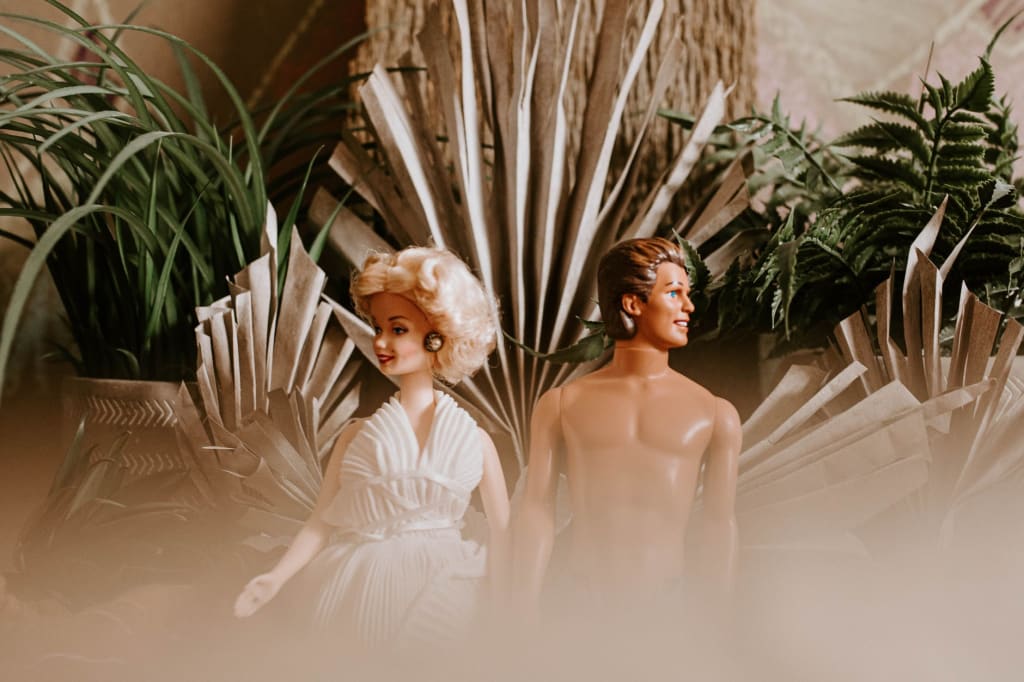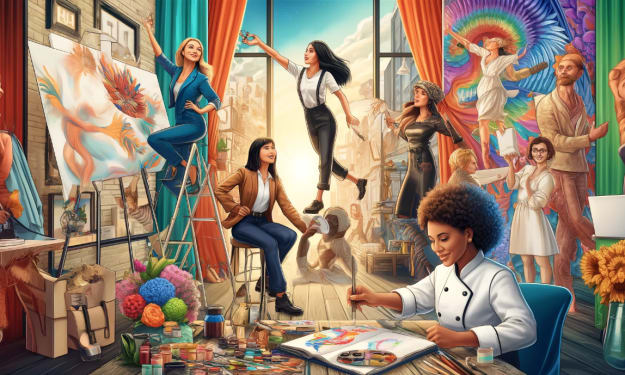You Will Never Be Pretty Enough
The toxic impossibility of beauty standards

On March 9, 1959, the Barbie doll was first introduced into the American market. Barbie was modelled after the German “Bild Lilli” doll, a racy figurine designated as the epitome of female beauty and often found at bachelor parties and in tobacco shops.
Mattel’s co-founder Ruth Handler had discovered the German doll on a family trip in Switzerland, re-inventing it as a children’s toy and naming it after her young daughter Barbara.
It wasn’t long before the voluptuous doll gained the attention of American consumers, becoming one of the most popular toys available to children.
Ruth Handler expressed her hope the doll would become something young girls could aspire to become. In the years following Barbie’s official release, she was seen in different roles: from the “Astronaut Barbie” who landed on the moon four years before Neil Armstrong, to the 1985 “CEO Barbie” who was dressed in a pristine pink suit.
Unlike the baby dolls present in toy stores across the country, Barbie was far more adult. While perhaps Handler’s goal of providing young girls with female figures inhabiting roles deviating from the traditional expectation of marriage and motherhood was noble, the invention of Barbie caused irreparable harm.
Barbie was marketed as the “perfect woman.” She was blonde, with sparkling blue eyes, long legs, a large bust, and a tiny waist. She excluded women of colour from the outset, as well as any other woman who fell outside the specific criteria for this version of beauty.
In addition, Barbie defied human proportions. According to a fact sheet from Chapman University, as an actual human woman — she would have size 3 feet, a 39” bust, an 18" waist and 33" hips. These measurements are humanly impossible.
Along with Barbie dolls, a plethora of Barbie paraphernalia bombarded the toy market. The 1965 “Slumber Party Barbie”came with an advice booklet on how to lose weight, with the alarming instruction: “Don’t eat.”
Admittedly, I was one of the millions of little girls who adored Barbie. I spent countless hours dressing up my Barbie dolls and designing their dream houses, purchasing a new Barbie whenever I had the chance.
Looking back, I am struck by how Barbie shaped my perception of myself and others. Like many other girls who kept their bedrooms full of Barbies, I wanted to look just like them.
Beauty in the digital age
While in recent years Mattel has launched a campaign to make Barbie more inclusive and emblematic of actual people, the existence of unrealistic beauty standards remains more pervasive than ever.
In a time when gorgeous social media influencers and Instagram models saturate popular culture, the image of society’s ideal woman remains clear. Pore-less, tanned skin — but not too dark — tiny waists and Kardashian-esque figures, are visible in every magazine, reality television show, and social media home page.
Scroll through a popular social media site like the wildly popular video-sharing platform TikTok, and see an ocean of young women and girls who look almost identical. Ironically, it was social media influencer Khadija Mbowe who first brought this to my attention with her excellent video essay entitled “Why do all these influencers have the same face?”
Female influencers such as the Kardashians owe their homogeneous appearances to face filters, extensive editing, and cosmetic surgeries. Wealthy women use their capital to pay teams of editors and cosmetic surgeons to help them achieve and maintain the so-called “Instagram face,” a combination of full lips, cat eyes, high cheekbones and a tiny nose.
Khloe Kardashian recently came under fire for threatening legal action against anyone who reposted an unedited, leaked photograph of her online. The incident sparked controversy across the internet. It was also proof of the manufactured version of beauty many popular influencers present to the rest of the world — an appearance that requires a literal team of editors, make-up artists, surgeons and other beauty professionals to maintain.
One can argue there is nothing inherently wrong with these influencers choosing to conform to this very specific brand of beauty. However, when a single version of female beauty is perpetuated over and over — often at the expense of the vast majority of women — it can cause actual harm. Social media affects our perception of ourselves and others. So when we scroll through countless manufactured portraits of women believing them to be real, we devalue our own sense of worth.
Black women are disproportionately affected by the rise of the Instagram face. As Dr. Katherine Appleford argues, this version of beauty is reminiscent of the stereotypical image of Black femininity, but permits the non-Black influencers who appropriate it to avoid the burden of discrimination that comes with Blackness.
It is common for Black women to be pushed to the sidelines in these virtual beauty communities while non-Black influencers leverage conventions of Black femininity for their own gain.
The fluidity of beauty standards
Even the few women who possess the means to attain the Instagram face won’t be considered beautiful forever.
Beauty standards are fluid — changing across different times and cultures. The current western standard of beauty would look bizarre when scrutinized by people from a different era or culture, where another set of features is perceived as desirable.
One of my close friends and I were discussing this one day, as we enjoyed a picnic on the beach. She was lamenting the fact her South Korean family members expect her to use skin-lightening creams and take other measures to ensure her skin remains as pale as possible. She has a naturally darker complexion, which, she explained, contravenes the traditional Korean standard of beauty.
She revealed the beauty standards in South Korea, as well as in many other Asian countries, are rooted in colonialism. In India, for instance, fair-skinned actors and actresses are highly sought after because of the European version of beauty perpetuated by British colonists. Today, Unilever — the parent company of Dove — is responsible for the popular “Fair & Lovely” skin-lightening cream. It is worth noting after backlash, Unilever changed the skin cream’s name, but its purpose remains the same.
Whenever I visit my relatives in Ireland, they always tell me how much prettier I would look if I tried out one of their spray tans. To many Irish women and girls, being pale is deemed unattractive, although many of them have fair skin.
It seems like every culture values a singular definition of beauty: one which is unattainable for the vast majority of women.
Throughout time, beauty standards have changed drastically. In the 1920s, the “ideal woman” was thin with a boyish figure, whereas in the 1950s, the women who were considered the most desirable resembled Marilyn Monroe.
In a few years from now, Kim Kardashian and the rest of the “Instagram face” influencers, will fade into oblivion, being replaced by a new beauty trend.
Final thoughts
In the end, it is impossible to attain western society’s beauty standards, or any society’s version of beauty. Though it sounds cliché, we come in all shapes and sizes, with vastly different skin tones, body types, hair textures, bone structures, and so on.
To idolize a singular version of beauty — especially one that is so unrealistic as the Kardashian-esque Instagram face — is to marginalize the many individuals who fall outside of this inherently restrictive standard.
About the Creator
Ilana Quinn
I am a student who loves writing about history, travel, faith and life experiences. Feel free to check out more of my writing at https://linktr.ee/ilanaquinn :)






Comments
There are no comments for this story
Be the first to respond and start the conversation.